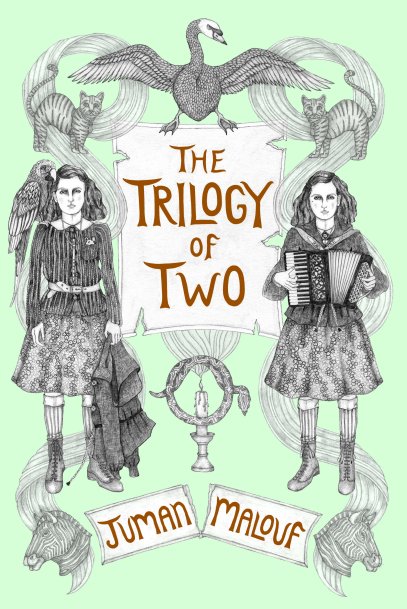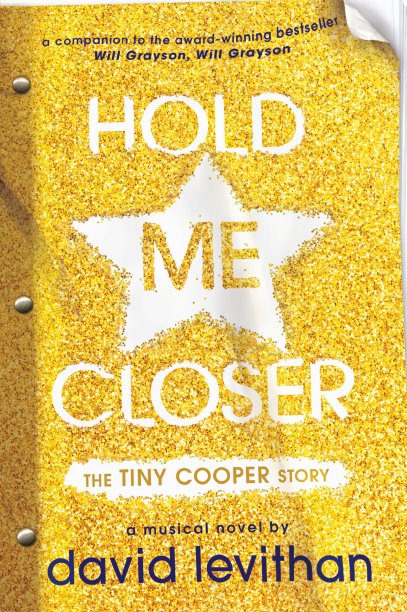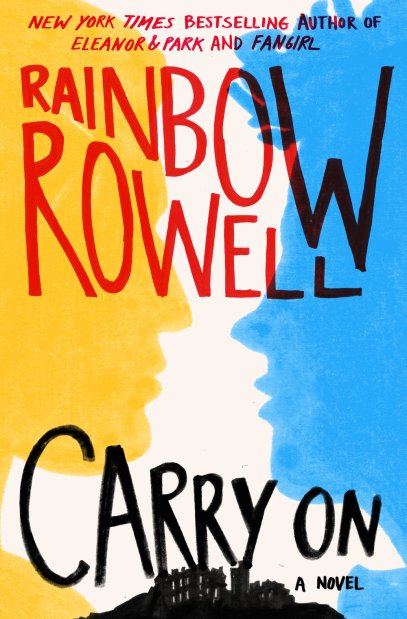-
Saint Anything, Sarah Dessen

Viking Dessen’s 12th young adult novel follows her usual family-focused plotting, but in Saint Anything, there’s a darker, deeper tone. Sydney’s life is unraveling as her family’s zeroes in on her older brother Peyton, who’s landed in jail after a drunk driving conviction. Sydney is quiet, neglected, sheltered and even a bit boring—but she’s relatable and genuine in her struggles with heartbreak, friendship and SAT scores. Eager to come out from the shadow of her brother’s drama, she finds interesting ways to do so while still being the good girl her parents beg for, and need.
-
What Pet Should I Get?, Dr. Seuss

Random House More than two decades after the death of Theodor S. Geisel, aka Dr. Seuss, readers old and new got an unexpected treat when Geisel’s widow found an unpublished manuscript among his belongings. What Pet features the same boy and girl from One Fish Two Fish Red Fish Blue Fish with a simple narrative: They have permission to pick out one animal from the pet store, but they have to decide fast. It may not have the thematic ambition of Oh, the Places You’ll Go! or the thorough world-creation of How the Grinch Stole Christmas!, but it still brims with Geisel’s signature imagination and kid-friendly rhyming that make everyday events into an adventures.
-
The Trilogy of Two, Juman Malouf

Penguin Young Readers Two gifted young musicians, twins named Charlotte and Sonja, dazzle crowds playing their instruments in a vaguely Victorian traveling circus alongside their sort-of adoptive mother, a tattooed lady named Tatty. But strange things have started happening when they play their songs, sending the girls on a journey to find out where their disturbing powers come from. The word “whimsical” comes to mind, and not just because Malouf is perhaps best known as the partner, set and costume designer for Wes Anderson. In her debut novel, aimed at middle school readers (with illustrations by the author herself), Malouf shows enough talent and to stand on her own where whimsy and intrigue are concerned.
-
Confessions of an Imaginary Friend, Michelle Cuevas

Penguin Young Readers Jacques Papier is going through an early-life crisis: None of the kids or teachers at school seem to like him—in fact, they always ignore him. That’s because, as he eventually discovers, he’s not a real boy at all, but the imaginary friend of his sister, Fleur. Stunned by this news, Jacques tries to convince Fleur to set him free in this funny and bittersweet growing-up story.
-
The Nonsense Show, Eric Carle

Philomel Books The beloved author of The Very Hungry Caterpillar uses his collage-style illustrations to teach kids about surrealist art. With pages populated by strange sights like a horse and a rider who’ve traded heads, or a rabbit pulling a man out of a hat, Carle’s playful and enticing inventions will presumably not only prepare children for future appreciation of artists like Salvador Dalí and René Magritte, but also for thinking differently and coming up with fanciful inventions of their own.
-
Hold Me Closer, David Levithan

Dutton Juvenile A teenager named Tiny Cooper is the star of the companion to Will Grayson, Will Grayson, Levithan’s 2010 novel that he wrote with John Green. Tiny was then described to readers as “the world’s largest person who is really, really gay, and also the world’s gayest person who is really, really large”—he’s a hulking football player, and somewhat out of luck in love. Hold Me Closer reads like a musical theater script, full of flamboyant musical numbers, heartfelt stage direction and personality as big as Tiny himself.
-
The Thing About Jellyfish, Ali Benjamin

Little, Brown & Company Middle school is hard enough, but in Benjamin’s formidable debut novel, the bright but awkward Suzy Swanson faces a double whammy: she loses her best friend Franny twice, first figuratively to a group of cool girls, then literally to a strange drowning accident. Determined to explain her friend’s death—baffling to her, since Franny was such a strong swimmer—she reads about a rare and deadly species of jellyfish and decides one of them must have stung her friend. Suzy, who is also struggling with her parents’ recent divorce, adopts a vow of silence while she researches the species in this tragically beautiful depiction of youthful mourning.
-
All the Bright Places, Jennifer Niven

Knopf Niven brings all the feels with a pair of quirky teenagers who meet by happenstance and are dealing with death and grief in different ways. The story follows Violet and Finch as they go from strangers to friends to each other’s saviors. Their relationship draws first-love nostalgia, but it’s the raw and alarmingly relevant depiction of depression that makes it a favorite for more than just teens.
-
The Day The Crayons Came Home, Drew Daywalt

Philomel Books In Daywalt’s 2013 The Day the Crayons Quit, the crayons went on strike, crying abuse at the hands of their master. Red, for instance, felt overused, drawing everything from apples to fire engines. “I even work on holidays!” In the sequel, crayons with bigger struggles have begun writing postcards to Daywalt, begging to join his crew. One has been lost between the couch cushions; another would prefer to escape a toddler with no artistic skills. Whether they’re complaining or begging for mercy, the charming cast of characters gives young readers new perspectives on the world around them.
-
Carry On , Rainbow Rowell

St. Martin's Griffin Simon Snow is the Chosen One, and a student at a school for magic, but he’s not Harry Potter. Simon is Potter’s more complicated, more confused shadow: his magic is unreliable, and he’s plagued by self-doubt, and moreover his roommate is a dark, Malfoyesque vampire named Baz. Rowell finds emotions and situations in her magic school that don’t appear on the Hogwarts curriculum: Baz, just for starters, is in love with Simon. (I know, Dumbledore was gay, but in the books Rowling never gives him a love story. rowell goes there.) Carry On is no less magical than Harry Potter, but it’s full of a richness, a complexity and a romance all its own.